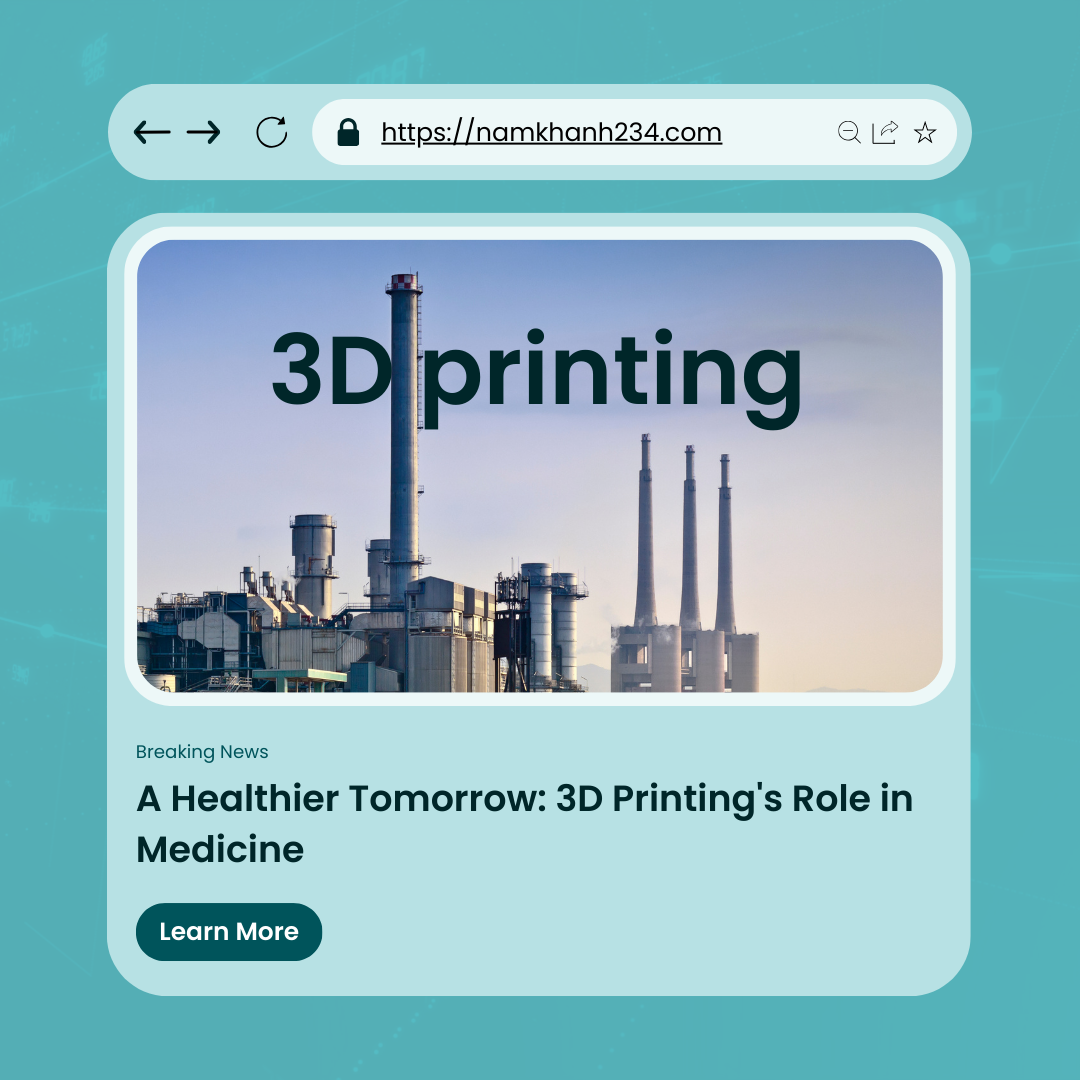
Introduction: In the rapidly evolving landscape of healthcare, 3D printing has emerged as a transformative force, promising a healthier tomorrow. This cutting-edge technology is reshaping the medical field, revolutionizing patient care, surgical procedures, and research. In this article, we will explore the pivotal role of 3D printing in medicine, highlighting its diverse applications and its potential to create a brighter future for healthcare.
- Personalized Medicine: 3D printing has ushered in an era of personalized medicine, departing from the one-size-fits-all approach of traditional healthcare. This technology enables healthcare providers to create customized solutions, such as patient-specific implants, prosthetics, and medical devices. With 3D printing, treatments are tailored to each patient’s unique anatomy, resulting in enhanced comfort and improved medical outcomes.
- Precision in Surgical Procedures: Surgical precision has been elevated to new heights with the integration of 3D printing. Surgeons can now utilize highly accurate, patient-specific 3D models to meticulously plan and practice complex procedures before entering the operating room. This precision minimizes the risk of complications, reduces surgery time, and accelerates patient recovery. Additionally, 3D-printed surgical instruments can be customized for specific procedures, further enhancing precision.
- Advancements in Medical Education: The incorporation of 3D printing into medical education has transformed the learning experience for aspiring healthcare professionals. Educational institutions can produce lifelike anatomical models that replicate human organs and structures with remarkable precision. Medical students and professionals gain hands-on experience, honing their skills and staying abreast of the latest medical innovations.
- Accelerated Research and Development: 3D printing expedites research and development within the healthcare sector. Researchers can quickly create and test medical devices, pharmaceuticals, and treatment methods. This agility proves particularly valuable in addressing emerging health challenges and pandemics, where swift innovation can save lives and deliver effective solutions.
- Precision in Dentistry: The field of dentistry has undergone a profound transformation thanks to 3D printing technology. Dentists can now create highly accurate dental implants, crowns, bridges, and orthodontic appliances customized to each patient’s oral anatomy. This precision improves dental outcomes, enhances patient comfort, and streamlines treatment processes.
- Biofabrication and Organ Printing: The future of 3D printing in medicine holds the promise of biofabrication and organ printing. Researchers are actively exploring methods to 3D print functional human tissues and organs. While this field is still evolving, it offers hope for addressing organ shortages and revolutionizing transplant procedures, potentially saving countless lives.
- Cost-Efficiency and Accessibility: 3D printing has the potential to reduce healthcare costs by minimizing the need for costly revisions and replacements. Customized medical solutions often prove more cost-effective in the long run. Furthermore, 3D printing’s adaptability and accessibility make it a valuable tool for delivering medical solutions to remote and underserved areas, addressing healthcare disparities.
- Telemedicine Integration: The integration of 3D printing with telemedicine has further expanded its impact on healthcare. Telemedicine has gained traction as a means to provide remote medical consultations and services, especially in underserved or remote areas. By combining 3D printing with telemedicine, healthcare providers can remotely assess patients, share digital designs, and create custom medical solutions. This synergy bridges geographical gaps and ensures that patients, regardless of their location, receive high-quality care.
- Ethical and Regulatory Considerations: As 3D printing technology advances in healthcare, addressing ethical and regulatory considerations remains essential. Ensuring the safety, quality, and ethical use of 3D-printed medical products is critical to maintaining patient trust and safety. Regulatory bodies and healthcare institutions must continuously adapt and refine standards to keep pace with the rapid evolution of this technology.
- Expanding Possibilities: The future of 3D printing in medicine is filled with exciting possibilities. Researchers are exploring groundbreaking applications, including the printing of complex vascular networks within tissues and the development of biocompatible materials for advanced medical solutions. These innovations offer hope for tackling some of the most challenging medical conditions and unlocking new avenues for treatment and care.